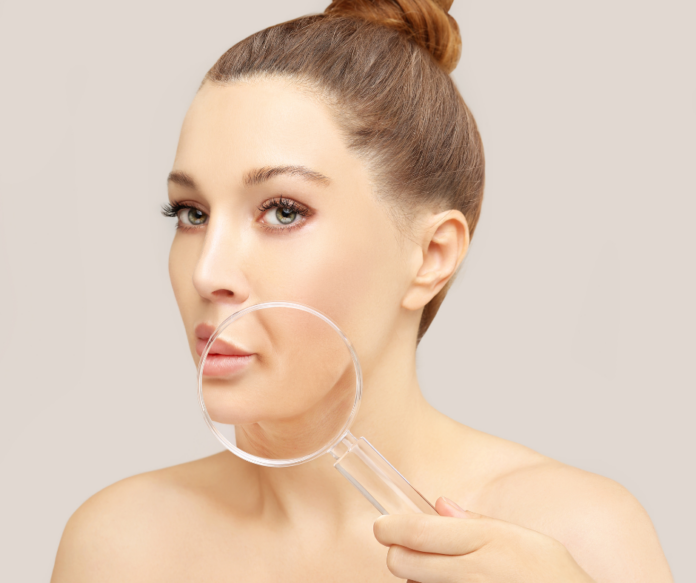
Dermal Fillers for Nasolabial Folds: Pros and Cons
Nasolabial folds, also known as smile or laugh lines, are the lines that run from the corners of the nose to the corners of the mouth. As we age, these lines can become more pronounced due to a loss of collagen and elastin in the skin. Dermal fillers are a popular treatment option for reducing the appearance of nasolabial folds, but it’s essential to weigh the pros and cons before deciding if this treatment is right for you. In this article, we will explore the benefits and drawbacks of dermal fillers for nasolabial folds, as well as provide answers to common questions about the procedure.
What are Dermal Fillers?
Dermal fillers are injectable substances used to restore volume and fullness to the skin, reducing the appearance of wrinkles and folds. There are several types of dermal fillers available, including hyaluronic acid-based fillers (such as Juvederm and Restylane), calcium hydroxylapatite fillers (such as Radiesse), and poly-L-lactic acid fillers (such as Sculptra). Each type of filler has its own unique properties and is suited for different areas of the face and varying degrees of volume loss.
Pros of Dermal Fillers for Nasolabial Folds
1. Immediate results: One of the most significant advantages of dermal fillers is that they provide immediate results. After the treatment, you will notice a visible reduction in the appearance of your nasolabial folds, giving you a more youthful and refreshed appearance.
2. Minimally invasive: Dermal fillers are a minimally invasive treatment option, meaning there is little to no downtime required after the procedure. Most patients can return to their normal activities immediately following the treatment.
3. Customizable: Dermal fillers can be tailored to your specific needs and desired results. Your practitioner can adjust the amount and type of filler used to achieve the best outcome for your individual concerns.
4. Temporary: Unlike surgical procedures, dermal fillers are temporary, allowing you to change your treatment plan as your face continues to age. Most fillers last between six months to two years, depending on the type of filler used and the individual’s metabolism.
5. Low risk of complications: When performed by a skilled and experienced practitioner, dermal fillers have a low risk of complications. Some potential side effects include redness, swelling, and bruising at the injection site, but these are generally mild and resolve within a few days.
Cons of Dermal Fillers for Nasolabial Folds
1. Cost: Dermal fillers can be expensive, especially when considering that the results are temporary and may require multiple treatments to maintain the desired effect. The cost of dermal fillers varies depending on the type of filler used and the amount needed to achieve the desired results.
2. Potential for overcorrection: In some cases, too much filler can be injected, leading to an overcorrection and an unnatural appearance. It’s essential to choose a skilled and experienced practitioner to minimize this risk.
3. Allergic reactions: Although rare, some individuals may experience an allergic reaction to the ingredients in dermal fillers. If you have a history of allergies or sensitivities, it’s essential to discuss this with your practitioner before undergoing treatment.
4. Temporary results: As mentioned earlier, dermal fillers are temporary, meaning you will need to undergo additional treatments to maintain your results. This can be both a pro and a con, depending on your perspective and desired outcome.
5. Not suitable for everyone: Dermal fillers may not be suitable for individuals with certain medical conditions or those taking specific medications. It’s essential to discuss your medical history with your practitioner before undergoing treatment.
Frequently Asked Questions About Dermal Fillers for Nasolabial Folds
How long do the results last?
The longevity of dermal filler results varies depending on the type of filler used, the individual’s metabolism, and the area treated. In general, hyaluronic acid-based fillers last between six months to two years, while calcium hydroxylapatite and poly-L-lactic acid fillers can last up to two years or more.
Are there any alternatives to dermal fillers for treating nasolabial folds?
Yes, there are several alternatives to dermal fillers for treating nasolabial folds, including:
– Fat transfer: This procedure involves harvesting fat from another area of the body and injecting it into the nasolabial folds to restore volume.
– Surgical procedures: A facelift or mid-facelift can help reduce the appearance of nasolabial folds by tightening the underlying facial muscles and removing excess skin.
– Laser treatments: Some non-invasive laser treatments can help stimulate collagen production, improving the appearance of nasolabial folds over time.
How can I find a qualified practitioner for dermal filler injections?
To find a qualified practitioner for dermal filler injections, it’s essential to do your research and ask for recommendations from friends, family, or your primary care physician. Look for a practitioner with experience in administering dermal fillers, as well as a strong understanding of facial anatomy. Additionally, make sure the practitioner is board-certified in a relevant specialty, such as dermatology or plastic surgery.
Conclusion: Dermal fillers for nasolabial folds: Pros and cons.
Dermal fillers can be an effective treatment option for reducing the appearance of nasolabial folds, offering immediate results with minimal downtime. However, it’s essential to weigh the pros and cons of this treatment and consider alternative options before making a decision. By consulting with a qualified practitioner and discussing your individual concerns and desired outcomes, you can determine if dermal fillers are the right choice for you.



